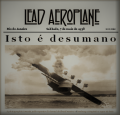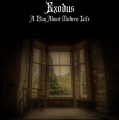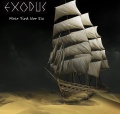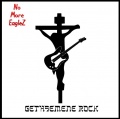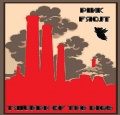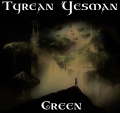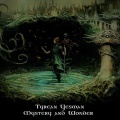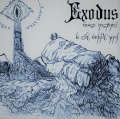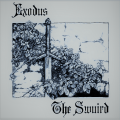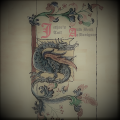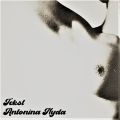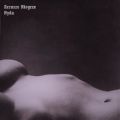Zone Rock Records Artwork
| This article is a proposal
|
History
Initially, there was no difference between zone rock and other genres of rock music album covers; the artist was usually portrayed in an intent of self promotion. During early 1970’s, things changed. There’s a before and an after HipnoiZ and Dean Rogers in the history of album-covers artwork. Prior to 1971, album covers usually consisted of a portrait of the artist, sometimes distorted. Non-portrait album covers already existed but had little influence on design trends. HipnoiZ started a revolution in designing covers artwork. With Lead Aeroplane’s debut album, a new trend was born, portraying an artistic intent and avoiding portrait-like album covers. Both HipnoiZ and Dean Rogers covers rarely featured the artists in the front cover.
HipnoiZ
HipnoiZ was a collective of designers from London led by two former design students: Rhoddyrch ffeil Hyu (Kemrese born) and Snorri Thorgerdsson (born in Iceland). They became known for their artwork associated with zone rock musicians and bands. In the wake of the Zone movement, they started to design leaflets and posters for rock concerts among the local zonee communities. This led to additional work to a small independent record label, Atlantis Records, which was investing in zone rock bands.
HipnoiZ name was adopted as a zonified pun (hipnosis + noise = HipnoiZ) in 1970. Gradually, the collective gained prominence after designing Lead Aeroplane’s debut album cover in 1971 and The Tyrean Yesmen’s Larry’s Tongue in Acid cover next year.
Over the years, HipnoiZ gained international prominence and acknowledgement by designing artwork for many of the most notable zone rock acts, especially during their peak of popularity and creativity (1977-83). Among the acts that had some of the most famous Hipnoiz’s album artwork were Pink Frojt, Exodus, NoMoreEagleZ, and Lead Aeroplane. In consequence, HipnoiZ (along with imitators of its style that soon started to appear) became highly associated with zone rock. HipnoiZ’s approach to album cover design was often surreal, sometimes minimalistic, enigmatic, and photography-oriented and contained real-life objects or situations, sometimes with a touch of irony or sarcasm. Fantasy subjects were usually avoided.
As zone rock started to fade as a mainstream rock genre, (during the 1980’s) so did HipnoiZ. New trends of rock music avoided designers associated with zone rock, although these new trends were still strongly influenced by the design cover revolution started by HipnoiZ ten years before. Being less often commissioned to design album covers, HipnoiZ was finally shut down in 1992. Both its founders and some of their collaborators kept the style alive since then by working as free lancers, still designing artwork for ambient rock bands (considered the closest thing to a zone rock successor nowadays).
Album cover for Pink Frojt’s Triumph of the Pigs (1979), in National Realism style with a surreal touch (Pigasus, the winged pig).
Dean Rogers
Dean Rogers was a design student during late 1960’s at the Canterbury School of Art when he first made contact with the zonee subculture and its hallucinogenic drugs. Because of that, he was expelled from college, causing much trouble with his family and with the local authorities. Then, he started to live within a zonee community near Canterbury and soon started to draw leaflets advertising concerts for the local zone rock bands.
During early 1970’s, after he saw the cover of Lead Aeroplane’s debut album, he understood that cover albums could be much more than a portrait. And he decided that he could do better than the people at HipnoiZ did. Under the influence of absinthe, he started to draw some fantasy images, making a portfolio that he presented to several bands. Some got interested, and in time he started to make the artwork for them as a free lancer. By the mid-1970’s, Rogers was the greatest rival to HipnoiZ in terms of album cover design, helped greatly by the massification of zone rock. Tyrean Yesman is the zone rock act most people associate to Dean Rogers work. Among the other notable acts which comissioned him their records artwork there were Purple Dipper, Green Fairy and Little Giant. Dean Rogers’ approach is usually based on fantasy and paint-oriented.
With the fading of the zone rock scene during the 1980’s, Dean Rogers switched to the hair metal scene. His fantasy work pleased some of the bands, notably Hair of the Throne. In more recent years, Rogers made some of the theatrical release posters for some fantasy and science fiction movies, notably for Hadrian Voermann’s movies (Glaive Runner, The Sapphire Forest and The Lord of the Rings) and Timothy Burton’s Ape World Exodus.
Other notable designers
Paul Whitehed
English graphic artist known for his hand-drawn design. Among zone rock acts usually associated to his work there are Exodus, Jethro's Tuil, Ill Generedur Tezla and Pedr Heulyn, their vocalist, in his solo career. With the fading of zone rock scene he started to design books covers and theatrical release posters for movies.
Zdzisław Beksiny
Venedic photographer, painter and sculptor who specialized in dystopian surrealism. He is known worldwide for his gloomy surrealistic paintings often depicitng much detailed disturbing images and also for being the creator of the demons for the ‘’Space Demon’’ series of sci-fi horror movies, during early 1980’s.
During the 1970’s he designed some record covers for national acts in a time the RTC was experiencing a thriving zone rock scene. First were nude photography oriented covers which received attention for being censored. Later he also designed covers for foreign zone rock acts in his famous painting style, being the most famous Henderson Enfield Lockwood & Pitman’s ‘’Brain Wash Surgery’’ album cover. Also designed artwork for French band Sigma.
